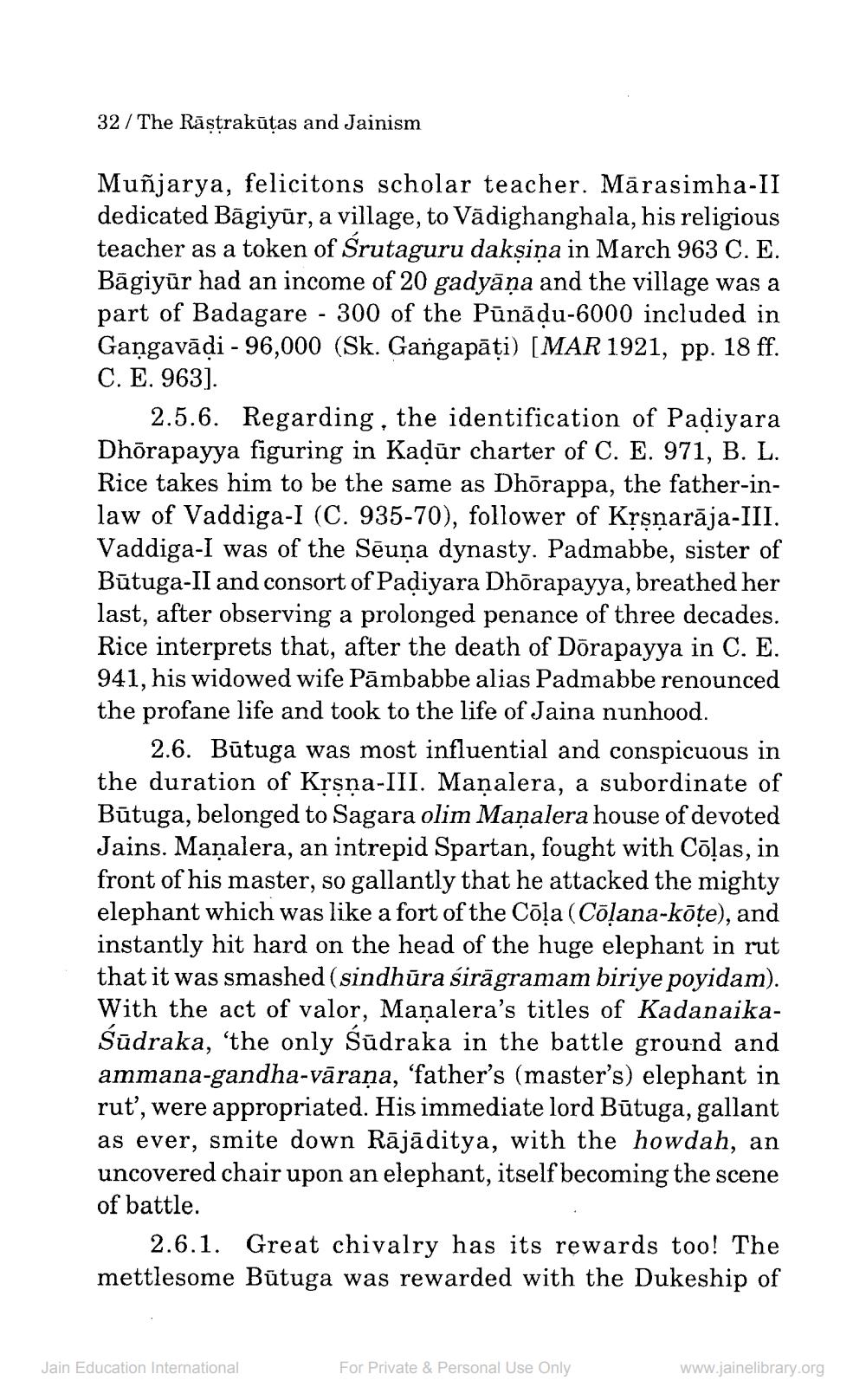________________
32 / The Rāstrakūtas and Jainism
Muñjarya, felicitons scholar teacher. Mārasimha-II dedicated Bāgiyūr, a village, to Vādighanghala, his religious teacher as a token of Śrutaguru dakşiņa in March 963 C. E. Bāgiyūr had an income of 20 gadyāṇa and the village was a part of Badagare - 300 of the Pūnādu-6000 included in Gangavāại - 96,000 (Sk. Gangapāți) (MAR 1921, pp. 18 ff. C. E. 963).
2.5.6. Regarding , the identification of Padiyara Dhorapayya figuring in Kadūr charter of C. E. 971, B. L. Rice takes him to be the same as Dhörappa, the father-inlaw of Vaddiga-I (C. 935-70), follower of Krsnarāja-III. Vaddiga-I was of the Sēuņa dynasty. Padmabbe, sister of Būtuga-II and consort of Padiyara Dhörapayya, breathed her last, after observing a prolonged penance of three decades. Rice interprets that, after the death of Dorapayya in C. E. 941, his widowed wife Pāmbabbe alias Padmabbe renounced the profane life and took to the life of Jaina nunhood.
2.6. Būtuga was most influential and conspicuous in the duration of Krsna-III. Mañalera, a subordinate of Būtuga, belonged to Sagara olim Mañalera house of devoted Jains. Mañalera, an intrepid Spartan, fought with Cēļas, in front of his master, so gallantly that he attacked the mighty elephant which was like a fort of the Cāļa (Coļana-kõte), and instantly hit hard on the head of the huge elephant in rut that it was smashed (sindhūra sirāgramam biriye poyidam). With the act of valor, Mañalera's titles of KadanaikaŚūdraka, 'the only Śūdraka in the battle ground and ammana-gandha-vāraṇa, 'father's (master's) elephant in rut, were appropriated. His immediate lord Būtuga, gallant as ever, smite down Rājāditya, with the howdah, an uncovered chair upon an elephant, itself becoming the scene of battle.
2.6.1. Great chivalry has its rewards too! The mettlesome Būtuga was rewarded with the Dukeship of
Jain Education International
For Private & Personal Use Only
www.jainelibrary.org




